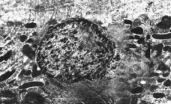(Press-News.org) Ann Arbor, MI, August 18, 2014 – In a new supplement to the September issue of the American Journal of Preventive Medicine, experts address the state of the science on suicide prevention and provide useful recommendations for research to inform effective suicide prevention. Suicide has been a challenging and perplexing public health issue to study as it has many dimensions and underlying factors. Although much is known about the patterns and potential risk factors of suicide, the national suicide rate does not appear to have dropped over the last 50 years.
This groundbreaking supplement—titled Expert Recommendations for U.S. Research Priorities in Suicide Prevention—draws together topic experts across the spectrum of suicide prevention research, who have considered and proposed ways in which research improvements could more effectively reduce suicide. The 24 articles cover a broad range of scientific topics, from basic science regarding the neurobiological underpinnings of suicide to the dissemination and implementation of prevention strategies. They represent a subset of presentations made by suicide prevention experts to inform A Prioritized Research Agenda for Suicide Prevention: An Action Plan to Save Lives (Research Agenda), which was created by the National Action Alliance for Suicide Prevention's Research Prioritization Task Force (RPTF).
"The articles in this special supplement represent the collective thinking of suicide prevention experts from across the United States and several other countries about where research efforts might best be invested to address the vexing public health problem of suicide," say the supplement's guest editors Morton Silverman, MD, Jane E. Pirkis, PhD, Jane L. Pearson, PhD, and Joel T. Sherrill, PhD. "We are confident the articles will have a major influence on the suicide prevention research community."
The content of the supplement directly addresses research that will inform the following goals:
Know what leads to, or protects against, suicidal behavior, and learn how to change those factors to prevent suicide
Determine the degree of suicide risk among individuals in diverse populations and in diverse settings through feasible and effective screening and assessment approaches
Find ways to assess who is at risk for attempting suicide in the immediate future
Ensure that people who are thinking about suicide but have not yet attempted receive interventions to prevent suicidal behavior
Find new biological treatments and better ways to use existing treatments to prevent suicidal behavior
Ensure that people who have attempted suicide can get effective interventions to prevent further attempts
Ensure that healthcare providers and others in the community are well trained to find and treat those at risk
Ensure that people at risk for suicidal behavior can access affordable care that works no matter where they are
Ensure that people getting care for suicidal thoughts and behaviors are followed throughout their treatment so they do not fall through the cracks
Increase help-seeking and referrals for at-risk individuals by decreasing stigma
Prevent the emergence of suicidal behavior by developing and delivering the most effective prevention programs to build resilience and reduce risk in broad-based populations
Reduce access to lethal means that people use to attempt suicide
Proposed strategies include research into early detection of suicidal behavior, particularly among youth and adolescents, intervention, evidence-based follow-up care, and reducing stigma through the use of mass media.
Effective suicide prevention is a team effort, including both public and private partners. Contributors to the supplement stress that progress in the area of suicide prevention research will require interdisciplinary, collaborative science and that translational science and interdisciplinary research collaboration ("team science") will be critical for advancing science and ultimately identifying effective prevention strategies.
The supplement's guest editors conclude, "The papers in this supplement, like the Research Agenda itself, are intended as inspirational resources that highlight the challenges and rewards of engaging in suicide prevention research, and suggest future research directions that have the potential to advance the overall goal of reducing attempts and deaths."
INFORMATION:
Prioritizing suicide research can help lead to fewer suicide attempts and deaths
Suicide experts recommend research into early behavioral detection, interventions, use of mass media, and other areas, American Journal of Preventive Medicine reports
2014-08-18
ELSE PRESS RELEASES FROM THIS DATE:
IU study: Parents' vaccine intentions influenced by how benefits are communicated
2014-08-18
INDIANAPOLIS -- How do parents decide whether to vaccinate their child? In a study designed to formally look at the content of parent-targeted communications about the benefits of vaccination for measles, mumps and rubella, Indiana University School of Medicine investigators report that the framing of these messages influences parents' intentions to immunize their children.
The investigators report that parents who viewed informational material highlighting direct benefits to their own child were the most likely to subsequently indicate that they would have their baby ...
White, straight women leading surge in infertility treatments
2014-08-18
WASHINGTON — Heterosexual white women are twice as likely as racial or sexual minority women to obtain medical help to get pregnant, according to a recent study published by the American Psychological Association.
While income and lack of insurance only partially explained the lower number of racial minority women receiving fertility assistance, lack of insurance appeared to play a crucial role in whether lesbian and bisexual women received medical fertility help, especially in more recent years, according to the nationally representative study published in the APA journal ...
Environment and health experts commit to actions on climate change
2014-08-18
MONTREAL, August 15, 2014 — More than 500 delegates to the EcoHealth 2014 conference have issued a call to action to urgently and collaboratively address the impacts of climate change on the health of humans, animals and the global environment in light of the lack of a truly collective response to date.
Working through the International Association for Ecology and Health (IAEH), the 500 delegates from 62 countries, and the larger ecohealth community they reflect, have developed a vision and commitment to action that will bring together what is already being done to address ...
Stronger drunk driving laws lead to safer roads: Study
2014-08-18
Changes to British Columbia's laws against driving while impaired have reduced fatal crashes as well as ambulance calls and hospital admissions resulting from motor vehicle crashes, a new University of British Columbia study finds.
Researchers concluded that harsher penalties for impaired driving and speeding instituted by the B.C. government in September 2010 reduced crashes related to drinking and driving.
Automobile crashes declined 21 per cent, crash-related hospital admissions dropped 8 per cent and crash-related ambulance calls fell by 7.2 per cent. Based on ...
HSP72 confers protection in retinal ganglion cells and lateral geniculate nucleus neurons
2014-08-18
Optic nerve transection increased the expression of heat shock protein 72 (HSP72) in the lateral geniculate body, indicating that this protein is involved in the prevention of neuronal injury. Zinc sulfate and quercetin induced and inhibited the expression of HSP72, respectively. In a study reported by Dr. Ning Li and co-workers from the First Affiliated Hospital of Anhui Medical University, China, intraperitoneal injections of zinc sulfate, SP600125 (c-Jun N-terminal kinase inhibitor), or quercetin were performed on retinal ganglion cells in a Wistar rat model of chronic ...
Cholecystokinin octapeptide antagonizes apoptosis in retinal pigment epithelial cells
2014-08-18
Oxidative stress may cause retinal pigment epithelial (RPE) cell apoptosis. Nitric oxide and superoxide react to produce peroxynitrite, which, along with its derivatives, are strong oxidants. Cholecystokinin octapeptide-8 (CCK-8) can protect cholinergic neurons against basal forebrain lesion caused by brain injury. Research team at Hebei Province People's Hospital, China led by Dr. Yuan Liu treated human RPE cells with the oxidative stress inducer peroxynitrite, and evaluated the neuroprotective effects of CCK-8. Peroxynitrite triggered apoptosis in these cells, and increased ...
New discovery: Microbes create dripstones
2014-08-18
According to new research humble, microscopic organisms can create dripstones in caves. This illustrates how biological life can influence the formation of Earth's geology - and the same may be happening right now on other planets in space.
According to traditional textbooks dripstones are created by geological or geochemical processes with no influence from living organisms. But now scientists report that formation of dripstones can be a lot more complex than that: Sometimes microbes are responsible for the formation of these geological features.
The researchers from ...
Toothless 'dragon' pterosaurs dominated the Late Cretaceous skies
2014-08-18
A new study provides an exciting insight into the Late Cretaceous and the diversity and distribution of the toothless 'dragon' pterosaurs from the Azhdarchidae family. The research was published in the open access journal ZooKeys.
The Azhdarchidan pterosaurs derive their name from the Persian word for dragon - Aždarha. Interestingly, this derived and rather successful group of pterosaurs included some of the largest known flying animals of all times, with a wingspan reaching between 10 and 12 m.
'Dragon' pterosaurs had a worldwide distribution once and were the last ...
CU Denver study shows zoning regulations impact where marijuana dispensaries can locate
2014-08-18
DENVER (August 18, 2014) – Municipal zoning regulations may push marijuana dispensaries into low income, minority areas, according to a study just released by the University of Colorado Denver.
Published in the Journal of the American Planning Association, the leading professional and academic planning resource, the study shows that government regulations will likely cause an inequitable distribution of marijuana business throughout the city. Though the impact of dispensaries to the neighborhoods in which they are located has yet to be understood, the research is clear ...
Unraveling the mysteries of the Red Sea: A new reef coral species from Saudi Arabia
2014-08-18
The hard corals primarily responsible for the construction of coral reefs around the world have attracted the attention of taxonomists for hundreds of years. Despite the important role such corals play in building what are arguably the world's most diverse ecosystems, coral reefs in some parts of the world still hold surprises for modern scientists.
An international team of scientists has recently described a new hard coral species, Pachyseris inattesa, from the Saudi Arabian Red Sea. The study, led by the University of Milano-Biccocain collaboration with the King Abdullah ...
LAST 30 PRESS RELEASES:
Azacitidine–venetoclax combination outperforms standard care in acute myeloid leukemia patients eligible for intensive chemotherapy
Adding epcoritamab to standard second-line therapy improves follicular lymphoma outcomes
New findings support a chemo-free approach for treating Ph+ ALL
Non-covalent btki pirtobrutinib shows promise as frontline therapy for CLL/SLL
University of Cincinnati experts present research at annual hematology event
ASH 2025: Antibody therapy eradicates traces of multiple myeloma in preliminary trial
ASH 2025: AI uncovers how DNA architecture failures trigger blood cancer
ASH 2025: New study shows that patients can safely receive stem cell transplants from mismatched, unrelated donors
Protective regimen allows successful stem cell transplant even without close genetic match between donor and recipient
Continuous and fixed-duration treatments result in similar outcomes for CLL
Measurable residual disease shows strong potential as an early indicator of survival in patients with acute myeloid leukemia
Chemotherapy and radiation are comparable as pre-transplant conditioning for patients with b-acute lymphoblastic leukemia who have no measurable residual disease
Roughly one-third of families with children being treated for leukemia struggle to pay living expenses
Quality improvement project results in increased screening and treatment for iron deficiency in pregnancy
IV iron improves survival, increases hemoglobin in hospitalized patients with iron-deficiency anemia and an acute infection
Black patients with acute myeloid leukemia are younger at diagnosis and experience poorer survival outcomes than White patients
Emergency departments fall short on delivering timely treatment for sickle cell pain
Study shows no clear evidence of harm from hydroxyurea use during pregnancy
Long-term outlook is positive for most after hematopoietic cell transplant for sickle cell disease
Study offers real-world data on commercial implementation of gene therapies for sickle cell disease and beta thalassemia
Early results suggest exa-cel gene therapy works well in children
NTIDE: Disability employment holds steady after data hiatus
Social lives of viruses affect antiviral resistance
Dose of psilocybin, dash of rabies point to treatment for depression
Helping health care providers navigate social, political, and legal barriers to patient care
Barrow Neurological Institute, University of Calgary study urges “major change” to migraine treatment in Emergency Departments
Using smartphones to improve disaster search and rescue
Robust new photocatalyst paves the way for cleaner hydrogen peroxide production and greener chemical manufacturing
Ultrafast material captures toxic PFAS at record speed and capacity
Plant phenolic acids supercharge old antibiotics against multidrug resistant E. coli
[Press-News.org] Prioritizing suicide research can help lead to fewer suicide attempts and deathsSuicide experts recommend research into early behavioral detection, interventions, use of mass media, and other areas, American Journal of Preventive Medicine reports



